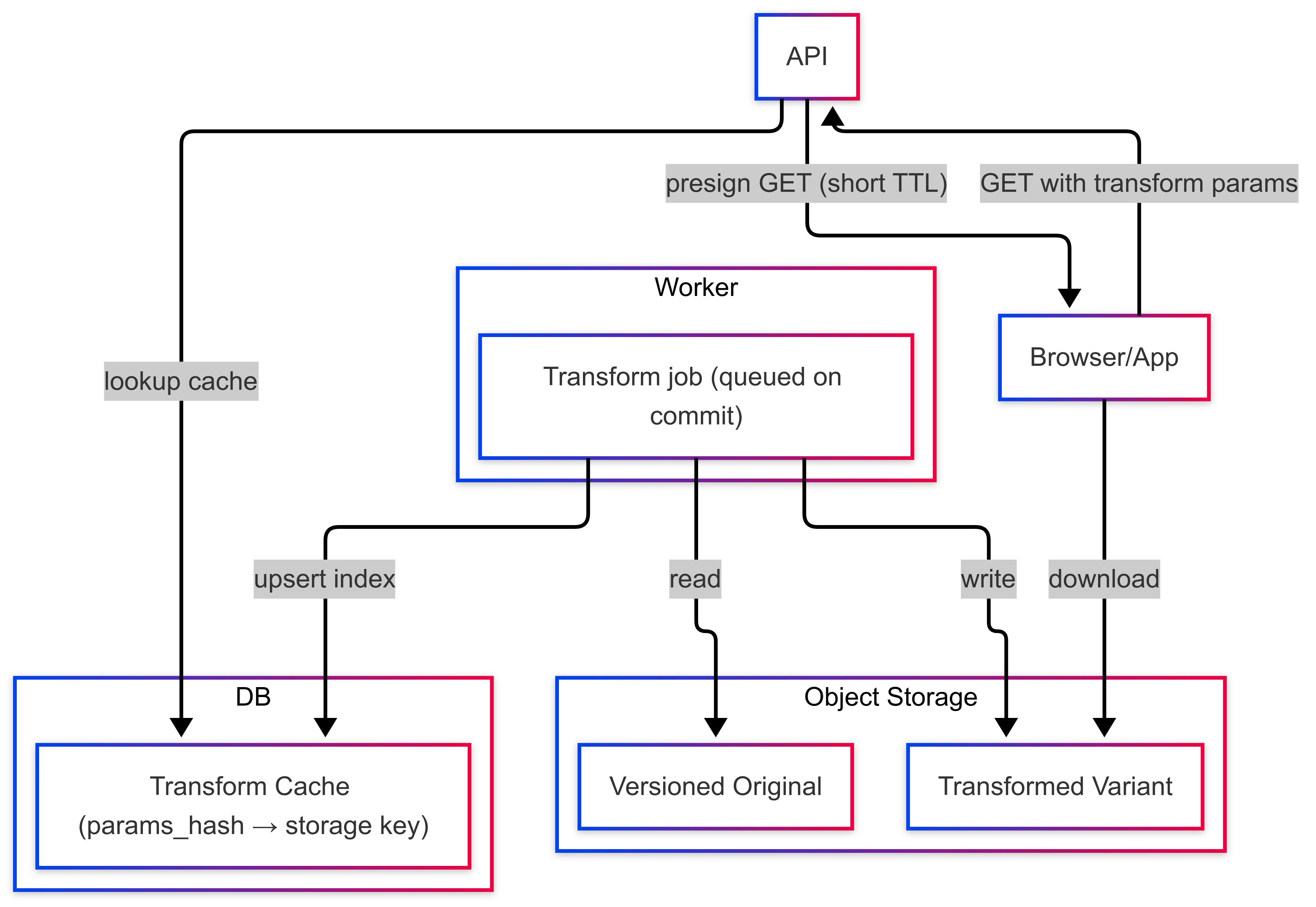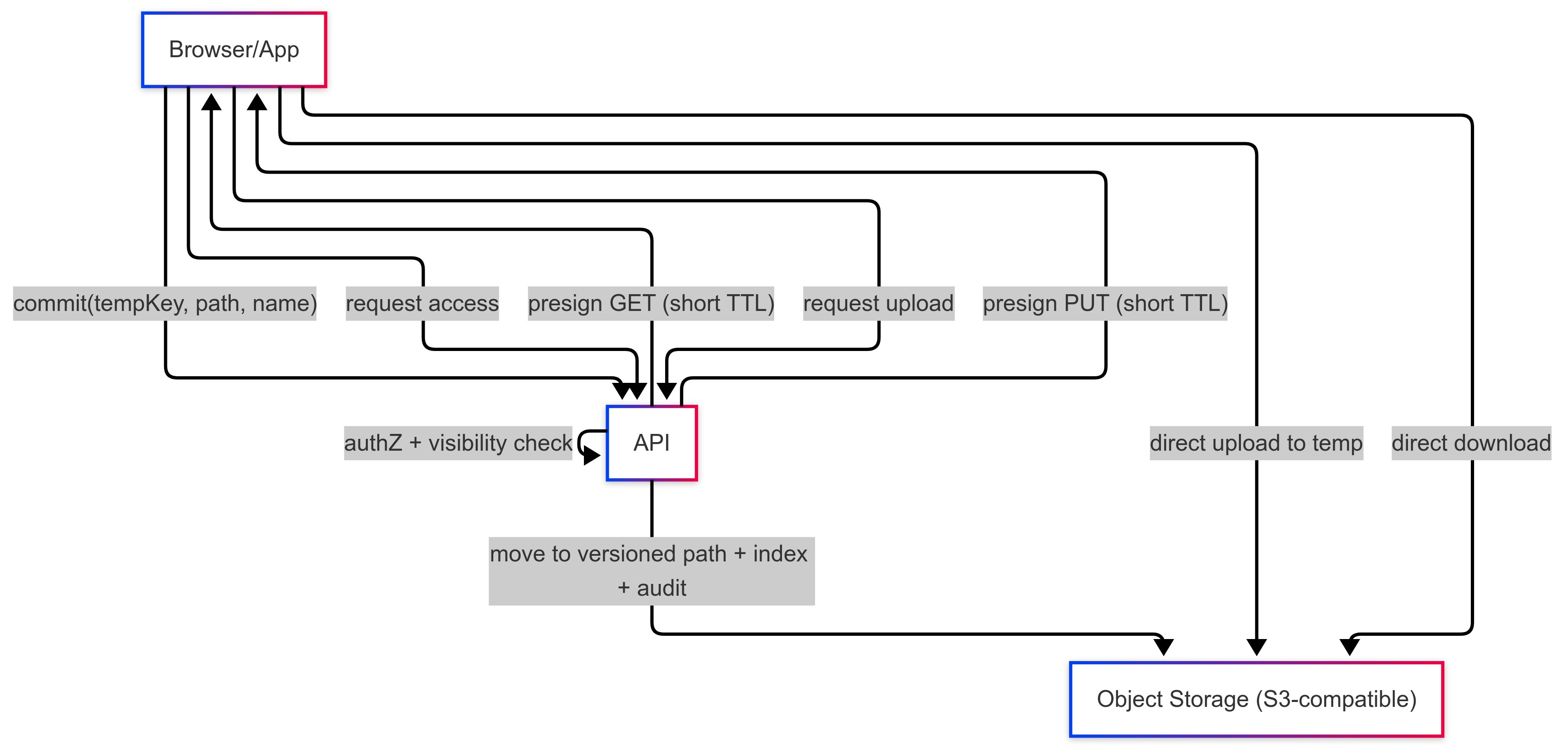SteadyLink Storage Architecture (Overview)
SteadyLink was built to deliver media at product speed while protecting privacy and keeping URLs stable. This overview explains how requests move through the edge, API, database, and object storage—without exposing provider details.
Why this architecture
The platform has two promises: links stay stable, and delivery is fast everywhere. Canonical URLs make embeds durable and SEO‑friendly. Edge caching and efficient streaming keep time‑to‑first‑byte low, even under load. For private media, short‑lived tokens add access control without leaking storage URLs.
From request to first byte
When a user opens a canonical URL like `/a/{id}`, the edge looks for a cached copy. On a hit, the response is immediate. On a miss, the API verifies access and streams bytes directly from object storage. Strong validators (ETag) and cache headers allow the edge to warm quickly and serve repeat traffic close to users.
This path is simple by design: stable links, a small number of hops, and no vendor URLs in the wild.
Uploads without bottlenecks
Uploads start at the API, which issues a short‑lived presigned URL. The browser then uploads bytes directly to storage. Afterward, a commit call records the new version in the database and attaches metadata. If common variants are helpful—like web‑ready sizes—the commit enqueues background work so the UI stays responsive.
Direct‑to‑storage means fewer retries, predictable throughput, and clear separation between metadata and bytes.
Background work, kept off the critical path
A separate worker handles time‑consuming tasks: precomputing frequent transforms, sweeping temporary uploads, and purging old entries. The goal is simple—keep the request path fast and move heavy lifting out of band.
Privacy and access control
SteadyLink supports both public and private delivery. Private assets are served via signed access tokens and organization scoping. Sensitive actions are auditable so teams can review activity and track usage without exposing global data. Raw storage URLs are not surfaced.
Reliability and performance posture
Edge caching near users, efficient streaming from storage, and versioned URLs for immutable assets keep the system predictable. Database indices support quick lookups for assets and versions, while canonical URL design avoids churn in downstream systems and embeds.
Summary
SteadyLink was built to make media delivery fast, private, and predictable. Canonical URLs, direct uploads, and background processing keep user flows quick, while caching and auditing provide reliability and visibility.


